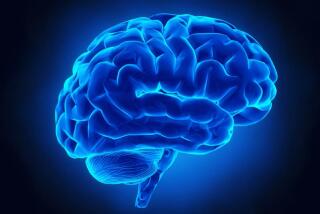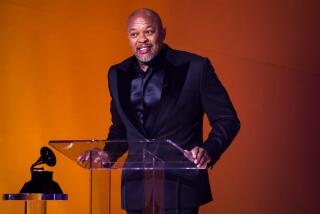Q&A: Luke Perry and John Singleton remind us that strokes can strike younger adults too
- Share via
Sudden weakness on one side of the body. Slurred speech. Loss of vision. Trouble with balance. Severe headaches.
These are signs of a stroke. If it happened to someone close to you, would you know what to do?
After the age of 55, the risk of a stroke doubles every decade, but younger people can be at risk too. In recent weeks, both 52-year-old actor Luke Perry and 51-year-old director John Singleton died after suffering a stroke.
Strokes occur when blood isn’t able to flow through the brain. More than 795,000 Americans have a stroke each year, and just over 146,000 of them die as a result, according to the Centers for Disease Control and Prevention. That means strokes claim a life once every four minutes.
The deaths of Perry and Singleton underscore the fact that strokes are becoming more common among middle-aged adults. Between 2003 and 2012, the odds of being admitted to a hospital following an ischemic stroke — the most common type of stroke — increased 35.6% among U.S. residents ages 35 to 44. For those 45 to 54, the odds increased 20.5% over the same period, according to a 2017 study published in the Journal of the American Medical Assn.
Mitchell Elkind, a neurologist at the Columbia University College of Physicians and Surgeons in New York, spoke with the Los Angeles Times about how to reduce your risk of a stroke and what you should do if someone near you has one.
Let’s start with the basics. What causes a stroke?
Ischemic strokes occur when a blood vessel carrying oxygen to the brain is blocked. This can be caused by atherosclerosis, which narrows the arteries, or by a blood clot that travels to the brain and gets lodged in a blood vessel. About 87% of all strokes are ischemic strokes.
The second most common type is a hemorrhagic stroke. These happen when a blood vessel bursts in or near the brain.
What makes you more likely to have a stroke?
Hypertension, or high blood pressure, is far and away the most important risk factor for stroke. Often, people don’t even know they have high blood pressure until something like a stroke or a heart attack occurs. That’s why we refer to it as a silent killer.
If you have high cholesterol, it can build up in the arteries and restrict blood flow in the brain. Smoking is a risk factor for ischemic stroke, and there is some evidence it can lead to aneurysms in the brain. These are bulges in a weakened artery wall, and they increase the chance of bleeding.
Heart disease can also be a cause of stroke. Clots can form when blood doesn’t flow normally, and those clots can travel to the brain.
What are signs of a stroke?
Think of the acronym FAST. F stands for face droopiness, A is for arm weakness and S is for slurred speech. If you see those symptoms, T is for time to call 911.
Other visible symptoms include sudden numbness, trouble walking or seeing, confusion and a severe headache.
What should you do if someone is having a stroke?
If you see someone who is staggering down the street or their face is drooping on one side, they’re talking nonsense and you don’t have any other clear explanation, call 911 so they can get treated right away. They will need to get a CT scan to see if it’s an ischemic stroke or a hemorrhagic stroke.
There’s not a whole lot you can do in the field. Just stay with them. Make sure the person doesn’t fall or hurt themselves.
Don’t get in the car and drive them yourself. Call 911 because the sooner patients get treated, the better their chances for recovery.
How fast do you have to get to the hospital?
We have treatment for ischemic stroke in the form of clot-busting medication called tissue plasminogen activator, or tPA. We also use something called mechanical thrombectomy, which is a big word for pulling the blood clot out of the brain.
These treatments are really effective, but they have to be done quite quickly. The clot-busting medication we can use up to 4½ hours after someone has a stroke, and these mechanical devices can be used up to 24 hours after a stroke.
When a blood vessel bursts, same logic applies. You want to get there as quickly as possible. We don’t have great treatments for a hemorrhagic stroke. Sometimes people do have surgery. That may be done within the first day or so.
John Singleton was 51 when he died of a stroke and Luke Perry was 52. Weren’t they kind of young?
We think of strokes as only affecting old people, but it’s important for people to know that stroke is not only a disease of the elderly. They can affect young people, and in fact we’re seeing an increase in strokes affecting young people in the U.S. right now. We’re seeing it in people in their 30s and 40s.
Why are young people having strokes?
We think part of the reason is some of those traditional risk factors like high blood pressure, cholesterol problems and diabetes. All of the kind of bad lifestyle choices many of us made, we’re seeing those things occur in young people.
Are men more likely than women to suffer a stroke?
It depends on age. At older ages, men are more likely to have strokes by about 20% or so, just like they’re a little more likely to have heart attacks. Women live longer than men, so there are actually more women having strokes at older ages.
At younger ages, women have a slightly higher risk than men. That’s probably related to hormonal factors and other changes during pregnancy.
What can you do to prevent a stroke?
The most important thing is controlling your blood pressure and having a relationship with a doctor to get your blood pressure checked and make sure it is under control. That’s part of a healthy lifestyle, of course.
We advocate a diet low in saturated fat. What I tell people is lots of fish, fruits and vegetables. No sugar-sweetened beverages. And get regular exercise.
What are the lasting effects of a stroke?
Strokes can leave people paralyzed on one side of the body. They could have trouble swallowing, trouble speaking, or trouble understanding speech. There could be loss of vision, loss of balance, and difficulty walking.
Then there could be cognitive problems. After a stroke, it’s common for people to have trouble with memory and concentration. That can lead to dementia over time.
What do you wish people understood about strokes?
It’s important for people to remember strokes can occur in young people, and that is news to a lot of folks.
People should know what the risk factors are and what a stroke looks like. Get help immediately because there are treatments available. People are pretty good at thinking of heart attacks as something that needs to be addressed immediately, but the message is getting out there with stroke.
This interview has been edited for length and clarity.







